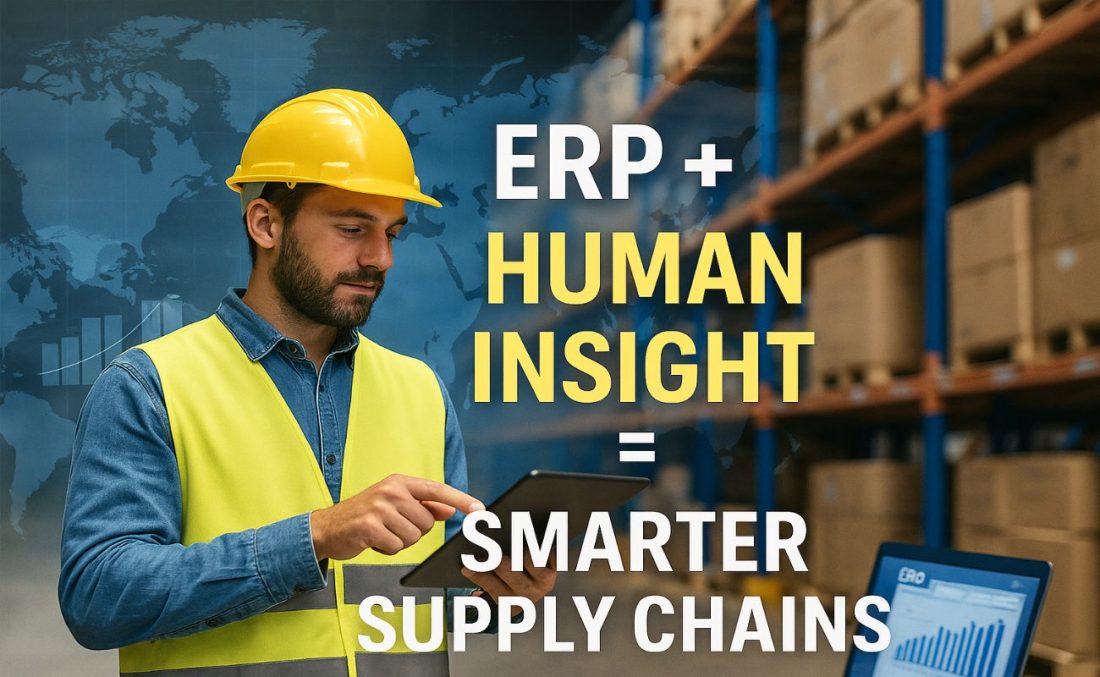The Complementary Power of ERP Systems and Human Insight in Supply Chain Management
July 10, 2025

In today’s dynamic global market, efficient supply chain operations are critical to a company’s success—especially when it comes to supply chain management in China, where complexity and scale demand both precision and adaptability. Enterprise Resource Planning (ERP) software plays a vital role in unifying functions such as inventory control, procurement, logistics, and demand forecasting. However, as powerful as ERP platforms have become, their value is best realized when paired with the strategic thinking and adaptability of human experts.
What ERP Systems Offer Supply Chains
ERP software serves as the backbone of modern supply chains by streamlining and connecting various operational functions. Through real-time data tracking and integrated workflows, ERPs help companies gain visibility, improve accuracy, and make data-driven decisions.
Some of the key benefits ERP systems provide include:
- Centralized Data Access – Teams can access consistent, real-time information across departments, eliminating silos and reducing errors.
- Process Automation – Repetitive tasks like order processing and inventory updates can be automated, increasing efficiency.
- Improved Forecasting – With analytics and reporting tools, ERPs support more accurate demand planning and resource allocation.
- Enhanced Compliance and Traceability – ERPs help maintain records that meet regulatory standards and support transparent supply chain practices.
Where ERP Systems Fall Short
Despite their many strengths, ERP tools are not a cure-all. Their effectiveness depends heavily on the quality of the data entered and the context in which they are used. This is where human input becomes indispensable.
For example:
- Contextual Decision-Making – An ERP might flag a shipment delay, but only a human can determine whether to reroute it, expedite production, or communicate with the client based on broader priorities.
- Supplier Relationships – While ERPs can log performance metrics, only people can build the trust and nuance required to resolve conflicts, renegotiate terms, or identify new sourcing opportunities.
- Risk Assessment – Identifying emerging risks—such as geopolitical instability or supplier financial trouble—often requires human judgment beyond the scope of an ERP’s programmed parameters.
Blending Technology and Human Expertise
Rather than viewing ERP systems and human oversight as separate forces, supply chain leaders should see them as mutually reinforcing. Technology provides scale and speed; humans provide interpretation and adaptability.
Successful companies take a few key steps to ensure this synergy:
- Train Teams to Maximize ERP Value – Employees must understand how to interpret ERP data and when to override or investigate anomalies.
- Customize Workflows Around Human Input – Build ERP processes that prompt users to review or approve decisions where necessary.
- Encourage Cross-Functional Collaboration – ERP systems work best when teams across departments collaborate, ensuring the data reflects operational realities.
Final Thoughts on ERP and Supply Chain Management in China
ERP software has revolutionized supply chain management, offering visibility, control, and efficiency. But the systems are only as effective as the people who use them. It’s the human element—strategic thinking, relationship management, and problem-solving—that transforms ERP data into action. By aligning technological capability with human expertise, businesses can build resilient, responsive, and intelligent supply chains equipped for the challenges of tomorrow.
